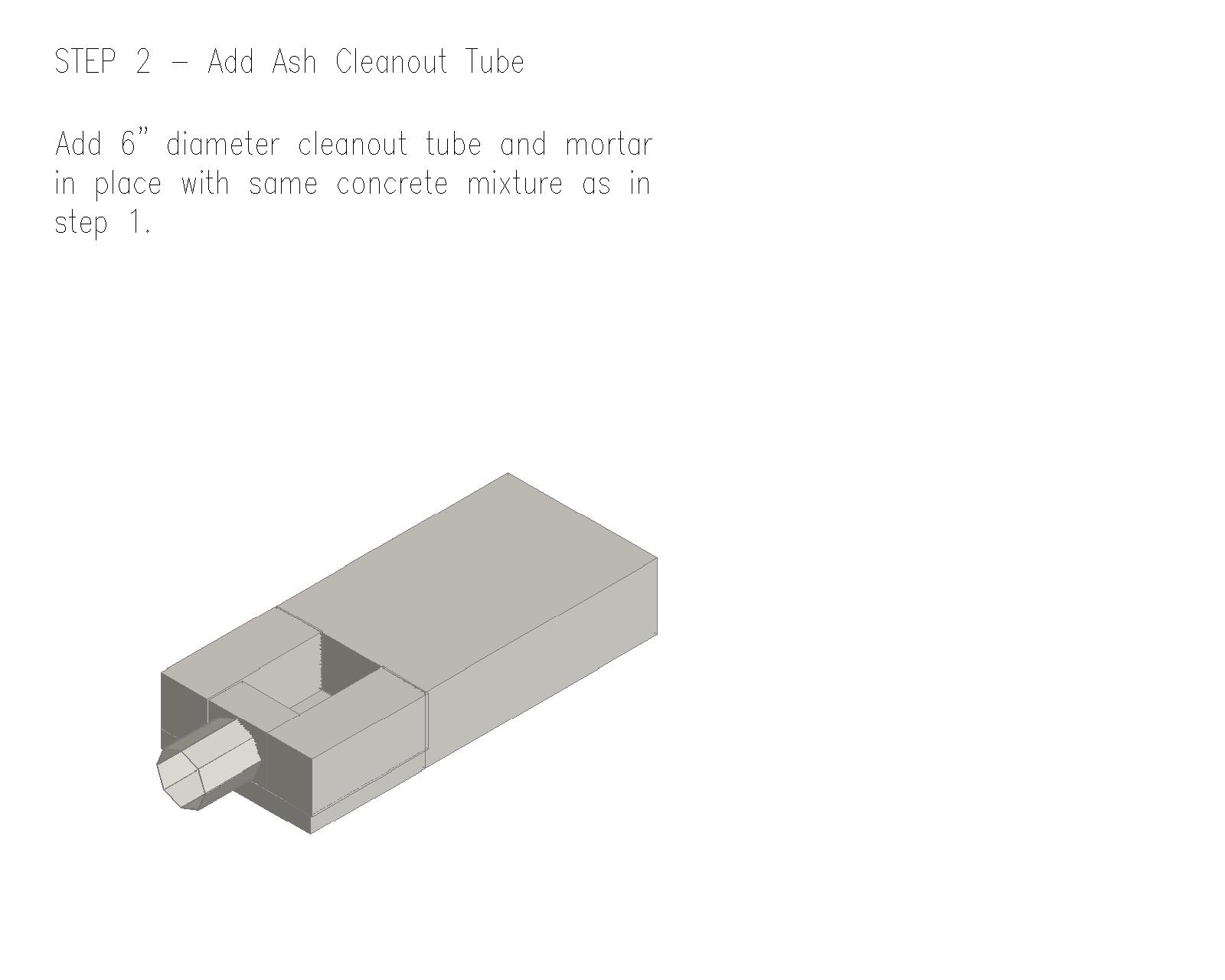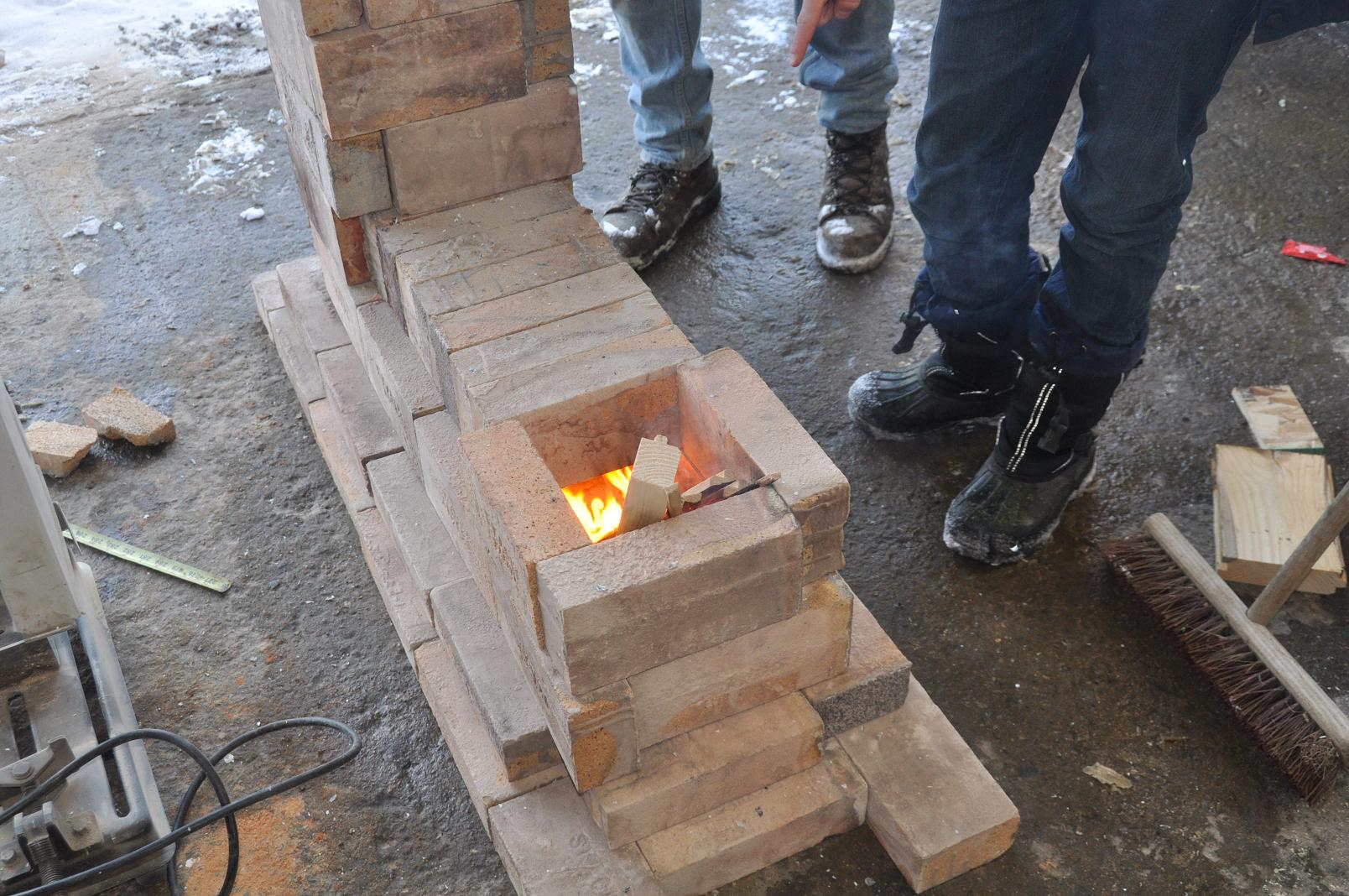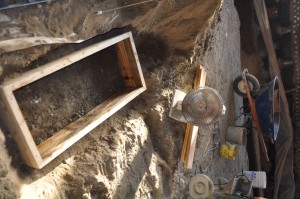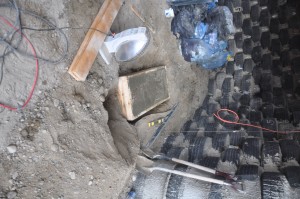|
|
Post by northriver on Nov 21, 2010 8:31:33 GMT -8
We've started laying out a rocket mass stove for our house. I am chronicling the process at www.darfieldearthship.com/2010/11/rocket-mass-heater.html. I have done up a 3D model of our proposed stove in autocad and any feedback on it would be appreciated (see the above link). I would post the full set of images here but there seem to be band width issues? For now one of my bigger questions has to do with placing perlite insulation under the stove. I am proposing to place a piece of sheet metal (1/8" to 1/4") between the perlite and the burn tunnel. My reasoning is to provide a stable base (other than perlite) to rest the stove on. Hopefully the following images make sense ...     I am assuming the metal will not be exposed to extreme temperature swings due to the fire brick above it, and will not warp. Any issues or better ways to do this that anyone can see? |
|
|
|
Post by canyon on Nov 21, 2010 8:47:44 GMT -8
I was recently turned on to foamed glass. This stuff is awesome if you can get it (special order through masonry stove suppliers? or kiln suppliers?). It comes in small sheets and can be used structurally. It has the same feel as pumice. Masonry stove builders use it for insulation underneath the whole mass! By laying that under you can then avoid the sheet steel and have a continuous insulation layer (no hard fire brick!)  |
|
|
|
Post by Dan (Upstate NY, USA) on Nov 21, 2010 19:12:48 GMT -8
The biggest problem would be thermal expansion. Steel expands way more when heated than brick. Especially thick steel, while thin sheet expands by warping.
Your thick steel plate will expand each time you fire up the stove which may cause the bricks above them to shift around each use.
Also if there is cob or masonary at the edges of the steel it WILL be pushed out when heated up.
Two ways to deal with this would be to use several smaller plates with gaps for expansion or maybe a thin "dusting of sand" inbetween the plate and bricks so the expansion of the plate can take place without moving the bricks as much. Kinda like logs under a heavy house when pulling it to a new site.
In reality you should be able to get away with it if there is enought cob mass around the stove to hold the bricks in place, just make sure there is some sand at the edges of that plate so your cob or masonary doesn't get destroyed there.
|
|
|
|
Post by northriver on Nov 21, 2010 22:59:51 GMT -8
Thanks for the comments about the steel.
I like the foamed glass but am not sure if I will be able to source this locally.
I have done some more reading (and re-reading of the rocket mass heater book), and two workable ideas seem to be clay slip with perlite or making the foundation out of light weight insulated concrete as was done here (http://ilovecob.com/archive/solunit-rocket).
I am now leaning towards making the foundation out of a perlite/concrete mix or pumicrete (a pumice aggregate based concrete); the foundation will have some insulation and I can eliminate the steel plates and insulation support bricks.
|
|
|
|
Post by Donkey on Nov 22, 2010 8:48:39 GMT -8
You could also re-arrange the brick supports to eliminate the steel base.
Another way to create an expansion joint is to wrap the bricks with thinnish (single layer corrugated) cardboard and cob around that. The cardboard will char out and leave a small gap.
A sand expansion joint, depending on the sand, can cause problems. Crystalline sand (like quartz) expands differentially under heat (on one axis more than the other(s)), which can cause cracking and shifting.
|
|
|
|
Post by northriver on Nov 22, 2010 22:03:36 GMT -8
So ... I've modified the base of the stove. I figure I will pour a light, insulated concrete footing and do away with the brick insulation supports and purlite as shown in step 1 of this post.  In step 2 I add an ash clean out tube and mortar it into place. This makes more sense to me unless anyone sees additional problems.  All of the steps I've laid out to date are viewable at www.darfieldearthship.com/downloads/heater/. Again, any comments are welcome ... |
|
|
|
Post by Dan (Upstate NY, USA) on Nov 25, 2010 9:25:44 GMT -8
The one thing I wonder about (keeping in mind I have only built an outdoor mock up of mine) is that with the grate you may lose valuable coals that could drop down if the spaces btwn the steel bars if the spaces are too big.
In my mock up the coal bed kept the fire going when I had to add new wood.
I also wonder about the bars drooping after long time use. I have had regular cast iron grates in my wood stove droop with a good bed of coals on them. I wonder if this would be a bigger problem with a rocket stove.
I have been thinking about an ash clean out too. I wonder if making one level with the burn tunnel would be better so you could reach to the back of the burn tunnel and clean out the ash that accumulates there too.
-Dan.
|
|
|
|
Post by northriver on Nov 25, 2010 19:53:28 GMT -8
I've thought about a clean out in-line with the burn tunnel as well ...
I have been unable to figure out a simple way to do it.
My hope is that the grate will be fine (have small holes). If it warps I suppose I will replace it. In terms of cleaning out the burn tunnel, I wonder if a vacuum would be sufficient? My hope is that my low cleanout will make access to the bur tunnel possible, but I think I may be dreaming.
|
|
|
|
Post by canyon on Nov 27, 2010 9:50:31 GMT -8
You could do like I am doing and make two steel doors and frames (one for ash clean out and one for burn tunnel access) or have a welder do it for you if you have the three or four hundred bucks for custom work. Then you could also load it horizontally along with the functions of cleanoutability and maintenance access.  |
|
|
|
Post by northriver on Nov 28, 2010 21:53:26 GMT -8
 We test fired the unmortared core of a rocket mass stove today … and it worked! Pictures posted at www.darfieldearthship.com/2010/11/horizontal-fire.html. We also tracked down materials for our rocket mass heater; fire brick, a barrel for the heat riser, refractory mortar and perlite. Sandra phoned around and finally tracked down fire bricks in Vernon (about a 2.5 hour drive) for $2.38 per brick. This seemed reasonable, so we started looking for 55 gallon barrels. We went to a used building supply place in Kamloops at the beginning of the week and found used barrels in good condition for $25.00. As we were leaving I asked the owner if he ever came across fire brick. It just so happened that one of his crews was demolishing an old boiler and yes there was fire brick! Thursday afternoon, in the middle of a snow storm, found my brother-in-law Tom and I loading 200 used (in good condition) fire bricks into the back of his pickup truck from the demolition site in Kamloops. I paid forty cents a brick! Well worth the effort … thanks Tom! Refractory mortar (mortar that can withstand high temperature) was harder to track down. We finally found some at Inland Building Supplies in Kamloops. Perlite is used for insulation and is the same stuff used in your garden. Most garden centres carry it, but we would still like to find somebody who stocks it in bulk as it is very expensive in small quantities. With these items in hand we were ready to start this project! I laid out the test build of the rocket in the shop. With the doors open we get excellent ventilation in the shop so it seemed safe enough. The bricks are remarkably clean … I did scrape old mortar off of some of them to get good, flat surfaces. I was able to cut the bricks using a cut off grinder. I used the grinder outside and I wore a mask. Cutting bricks is messy, fortunately I only needed to cut a total of two. I put news paper and kindling into the short end of the ‘J’ and lit the paper. The fire took right away and started drafting sideways immediately … I did not have to do anything. I was pleased! Based on the test assembly I plan to remove one brick from the top of the horizontal feed tube and shorten the lower layers appropriately. |
|
|
|
Post by northriver on Nov 28, 2010 22:38:21 GMT -8
We poured the footing for the rocket mass heater on Saturday. We dug the footing down so that it is level with the unfinished floor of our building. The finished floor will be 4-6 inches higher than the top of this footing. This should mean that the top of the heat riser barrel is about three and a half feet above finished floor level ... hopefully at a decent height for tending a tea kettle! The footing is formed with scrap 2x6 lumber.  We poured a 440 psi perlite aggregate/portland cement footing. This is the first time I've used perlite to make concrete, and it was very weird ... the mixed concrete was ridiculously light! The idea behind this footing is that it is insulated ... the core of the stove will not lose lots of heat to the ground beneath it. We needed about 3.5 cubic feet of concrete, so we used 4 cubic feet of perlite aggregate and 1 sac (88 lbs) of portland cement. Details on using perlite as an aggregate in concrete can be found at www.perlite.org/product_guides/12%20lightweight%20insulating%20concrete.pdf.  Hopefully, we will start the core of the stove this week. |
|
|
|
Post by Donkey on Nov 29, 2010 11:32:58 GMT -8
Nice!
So.. You can only remove one brick's (thickness) length from the burn tunnel? Can you remove more?
The shorter the burn tunnel length, the better.
|
|
|
|
Post by northriver on Nov 29, 2010 14:02:01 GMT -8
> So.. You can only remove one brick's (thickness) length from the burn tunnel? Can you remove more?
> The shorter the burn tunnel length, the better.
I suspect I could remove at least one more brick (a total of two) but have been hesitant for two reasons:
1. I have been going off the 'Rocket Mass Heaters' cross section of an 8" stove, and I made my initial design off of this drawing. This drawing shows the same number of bricks I built my test unit with, and I have been hesitant to mess with what obviously worked.
2. In the book it states ... ' D is the distance from the feed tube to the heat riser and should normally be as short as possible ...optimum proportion is about half the height of the heat riser ...'
So, if I shorten D to less than half the heat riser height will there be any issues that anybody can think of?
At a certain point the heat riser barrel and the feed tube barrel will touch or intersect, but I am definitely not there yet.
|
|
|
|
Post by Donkey on Nov 29, 2010 17:48:35 GMT -8
When we did the testing, we discovered that it was half height OR LESS. If it doesn't say "or less" (in the rocket mass heaters book) it's a mis-print or a typo..
Keep it as short as possible, the shorter the better.
|
|
|
|
Post by Dan (Upstate NY, USA) on Nov 29, 2010 22:22:10 GMT -8
|
|